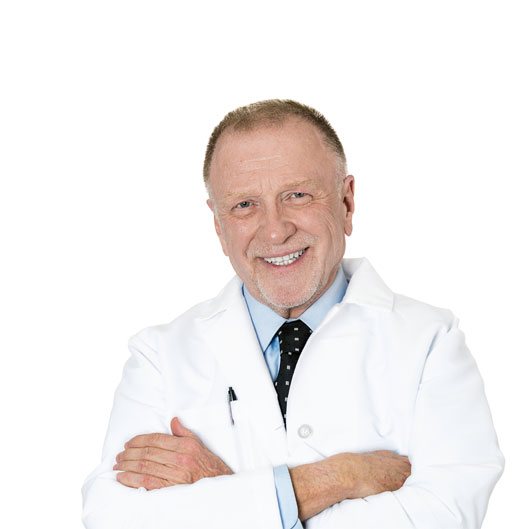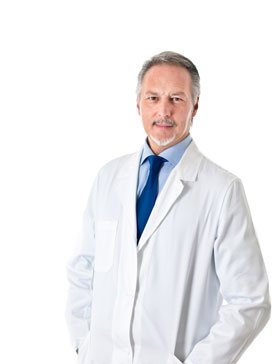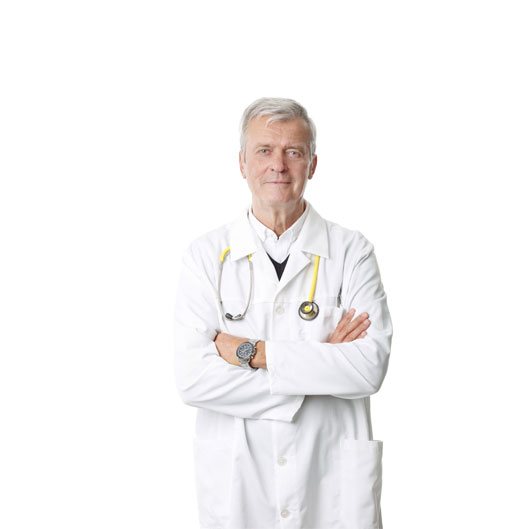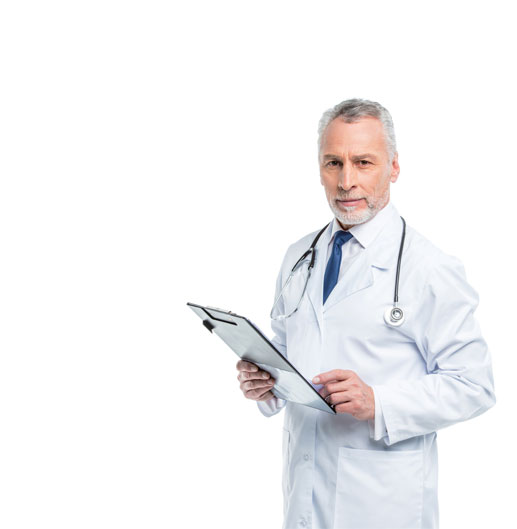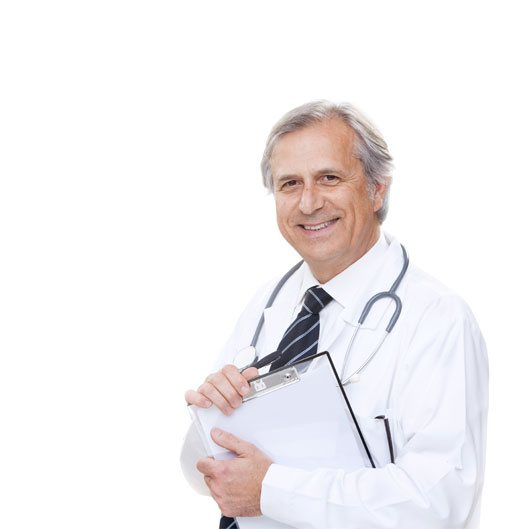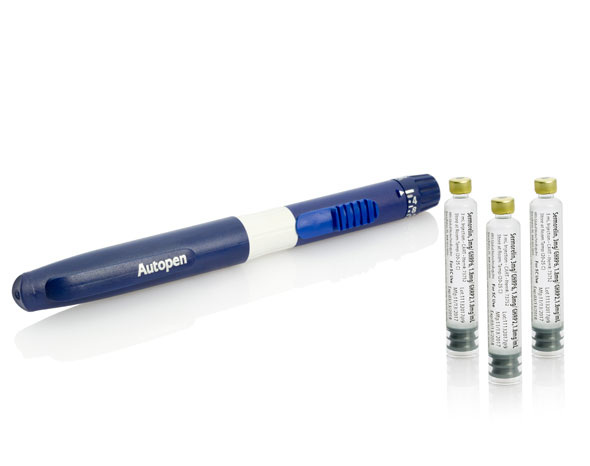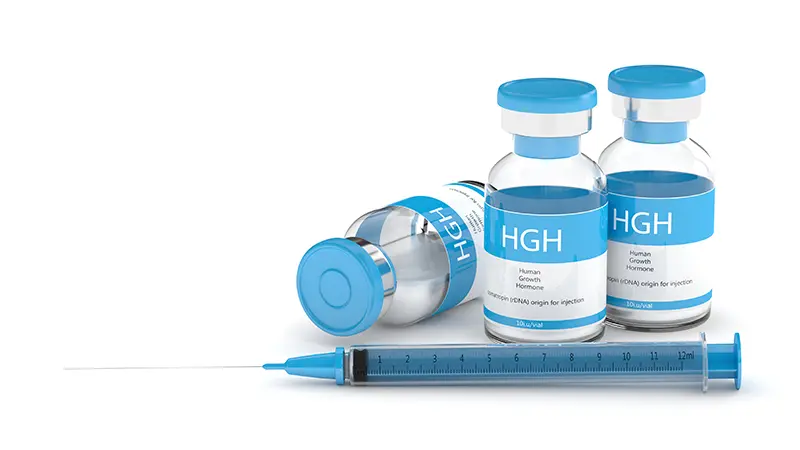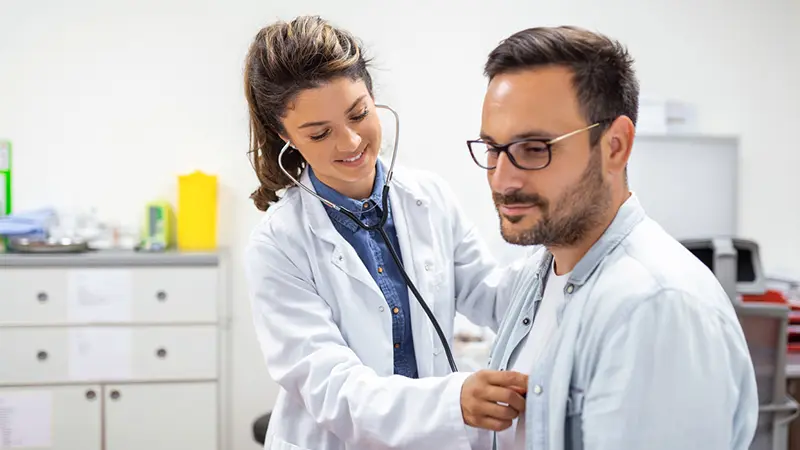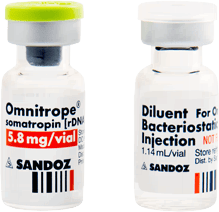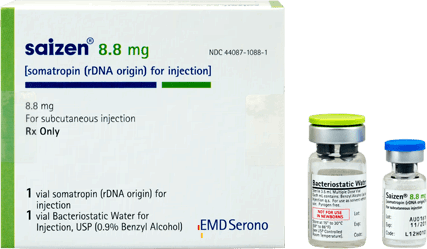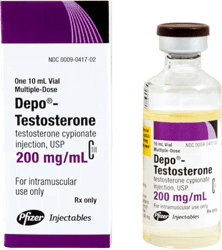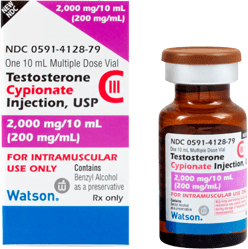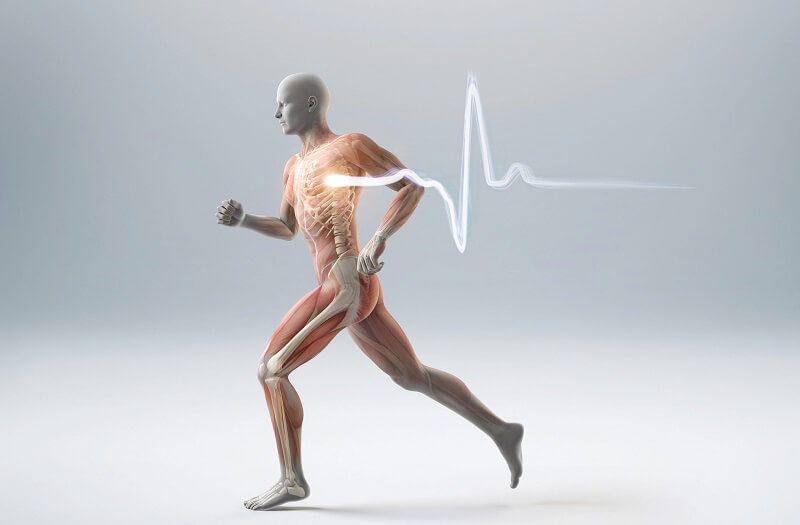- Home
- Growth Hormone
- Growth Hormone
- Growth Hormone Deficiency
- Growth Hormone Therapy
- Growth Hormone Injections
get startedThe Most Effective Hormone Replacement TherapiesIs HGH an Effective Treatment for Treating Muscle Tears?
Human Growth Hormone or HGH plays a critical role in cell regeneration, tissue repair, muscle strength and muscle development. Thanks to these vital functions, medical researchers have long speculated—and increasingly confirmed—that HGH can help heal and repair muscle tears.
While it is not typically used as a first-line treatment for acute injuries, there is a mounting body of evidence to suggest that HGH can accelerate healing, especially in cases of partial tears and soft tissue injuries where cellular regeneration is essential. This is why many team doctors and orthopedic surgeons are increasingly turning to HGH to treat typical sports injuries such as muscles and tendon tears and to speed healing after more intensive surgical repairs are necessary.
Studies have shown that HGH may improve collagen formation and protein synthesis—key components of muscle and tendon recovery. As a result, athletes and older adults alike are increasingly turning to HGH therapy to enhance headlining and assist in post-injury rehabilitation.
How Is HGH Used to Repair Muscle Tears?
When the body experiences an injury, such as a broken bone or torn muscle, it initiates a healing process that involves inflammation, cell proliferation, and tissue regeneration. This process requires a significant amount of energy and resources from the body, including nutrients and hormones. One of the key hormones involved in the injury recovery process is HGH.
When prescribed for therapeutic use, HGH is typically administered via subcutaneous injections. For patients suffering from muscle tears or related soft tissue injuries, HGH can enhance healing by:
- Promoting muscle fiber regeneration
- Increasing the production of collagen, which helps rebuild connective tissues
- Stimulating local tissue repair and blood flow
- Enhancing nitrogen retention, which supports protein synthesis
It’s important to note that HGH should only be used under medical supervision. Dosage and treatment duration are personalized based on the patient’s condition, hormone levels, and medical history.
Other Orthopedic Uses of HGH
In addition to supporting muscle repair, human growth hormone has shown promising potential in various orthopedic applications, particularly in aiding the regeneration and recovery of skeletal and connective tissues. The use of HGH has shown promise in recovery from hip surgery and has helped restore knee extension strength after knee replacement.
In the context of tendon and ligament injuries, a recent study explored the beneficial effects of growth hormone injections (somatropin) on rotator cuff healing after arthroscopic repair and concluded that HGH does have potential benefits in post-surgical tendon healing. This has major implications in the treatment of sports injuries for both the pro and recreational athlete.
Regarding bone healing, research has indicated that the administration of homologous growth hormone can stimulate callus formation and ossification during the early phases of bone healing. This suggests that HGH may play a role in accelerating the bone regeneration process, which is crucial for patients recovering from fractures.
In the realm of cartilage regeneration, studies have examined the use of bioactive growth factors, including HGH, as potential therapies to enhance the healing of chondral injuries and modify the arthritic disease process. These investigations aim to provide biological solutions through cartilage regeneration, which could be particularly beneficial for patients with cartilage defects, musculoskeletal injuries, or early osteoarthritis.
Overall, the evidence indicates that HGH indeed has a major role to play in the treatment of orthopedic injuries, from enhancing collagen expression to facilitating tissue and bone regeneration. These and many other related studies show that the effects of growth hormone make it a powerful tool for post-surgical healing and treating sports injuries, and degenerative joint conditions. Future studies will no doubt continue to prove the efficacy for HGH for repairing muscle tears.
Other Kinds of HGH Therapy
The ability of HGH to help preserve and build lean muscles is well-established. In fact among its other uses, HGH is also prescribed to treat the muscle atrophy of AIDS and other "muscle wasting" diseases.
Beyond its orthopedic and athletic applications, HGH Therapy is also often prescribed for treating adult-onset growth hormone deficiency (AGHD). Also known as “age-related” growth hormone deficiency, AGHD is caused by the steady decline in natural HGH production as we age. While this hormonal decline may be a natural part of aging, for many individuals, it results in a constellation of debilitating symptoms that significantly diminish quality of life. These may include
Symptoms of AGHD include:
- Decreased muscle mass
- Increased body fat, especially around the abdomen
- Fatigue and low energy
- Reduced exercise capacity
- Loss of libido (sex drive) and other sexual health issues
- Mood changes and poor cognitive function
- Thinning skin and reduced bone density
- Poor or disturbed sleep.
HGH therapy for AGHD is designed to restore hormone levels to a healthy range, rejuvenating the body’s ability to repair and maintain muscle, bone, and tissue health.
Like any medication HGH does have some negative side effects. However, whether it is used for orthopedic healing or for treating GHD, for most patients the benefits of HGH injections far outweigh any potential adverse effects.
The Many Benefits of HGH Therapy
When used responsibly under medical supervision, HGH therapy can offer a wide range of benefits, including:
- Enhanced muscle growth and muscle repair
- Increased energy levels and reduced fatigue
- Improved cognitive function and mood
- Reduction in abdominal fat and better body composition
- Faster recovery from injuries and workouts
- Improved bone density and joint strength
- Healthier skin tone and elasticity
- Better sleep quality
- Stronger immune system
- Enhanced sexual health and libido
HGH Therapy Before and After: What to Expect
Before HGH Therapy
The before and after results you can expect from HGH therapy can be remarkable.
Before starting a program of HGH injections, a person suffering from AGHD may experience a wide array of symptoms—persistent fatigue, poor recovery from physical exertion, muscle weakness, weight gain, low libido, and a general decline in vitality and appearance. These symptoms can significantly impact both physical and emotional well-being.
After Six Months of HGH Therapy
HGH therapy is usually prescribed for six months. Over the course of those months patients will experience dramatic “before and after” improvements. These may include increased lean muscle mass, reduced fat—particularly around the waist—elevated mood, renewed energy, enhanced sexual function, and more rapid recovery from physical activity or injuries. Most patients also note better sleep and a renewed sense of mental clarity and focus.
How to Buy HGH Injections in the US
In the United States, HGH is a controlled substance. You cannot buy HGH in the US legally without a valid prescription from a licensed healthcare provider. This regulation is in place to protect patients from potentially dangerous misuse.
Buying HGH from black-market sources—including unregulated online sellers—can be extremely risky. Such products may be counterfeit, contaminated, improperly dosed, or even toxic. Illegally obtained HGH also lacks the critical medical oversight needed for safe and effective treatment.
How to Get a Prescription for HGH
As stated above, you must have a prescription to buy HGH legally in the US. Purchasing or using HGH injections in the US without a prescription is both illegal and dangerous. However, getting a prescription for HGH is not hard. In fact, with Kingsberg Medical’s help, it only takes these five simple steps.
- Step 1 – Contact Us – Get the ball rolling by filling out our Medical History Form, one of our HGH therapy care counselors will get back to you.
- Step 2 – Consultation with a healthcare provider –If your initial contact with our customer care specialist indicates that you are a good candidate for HGH therapy, the next step is a consultation with a doctor or other practitioner. He or she will discuss your medical history in further detail and ask you more about your symptoms. Depending on your circumstances, this could be done via an online telemedicine visit
- Step 3 – Laboratory hormone testing – Once you have completed your online or in-person exam, you will be referred to a laboratory to have the hormone levels in your blood tested.
- Step 4 – You will obtain a prescription for a program of HGH therapy – If the results of your laboratory tests indicate that your HGH levels are low, we will prescribe a program of HGH therapy to suit your needs and lifestyle.
- Step 5 – Purchase and Delivery – You will be directed to our Medications for Sale Page, where you can buy your HGH. Soon after, we will deliver your HGH therapy supplies right to your home.
Why Choose Kingsberg Medical for HGH Therapy
Whether you need HGH therapy for muscle growth and repair or to treat the many debilitating symptoms of age-related HGH decline, Kingsberg Medical is a local leader in providing HGH treatments for men and women. We know that no two patients seeking HGH therapy are the same, and neither are their needs or wellness goals. Using state-of-the-art diagnostics, we design a treatment plan tailored to your unique hormonal profile and distinct lifestyle.
Our team of dedicated HGH treatment specialists is here to listen, understand, and provide guidance every step of the way. From your first consultation to your ongoing care, we prioritize your comfort and well-being.
While HGH is not a miracle cure for every injury, its role in muscle repair, orthopedic healing, and overall regenerative health is supported by a growing body of research. For patients experiencing the symptoms of AGHD—or recovering from muscle damage under a physician’s care—HGH therapy may offer a path toward renewed strength, vitality, and wellness.
Ready to turn back the clock with HGH? Contact today to find out if HGH therapy is right for you.
- Growth Hormone Therapy

